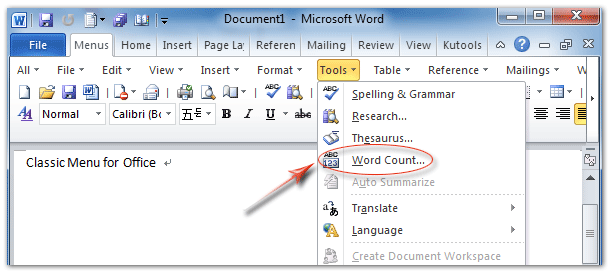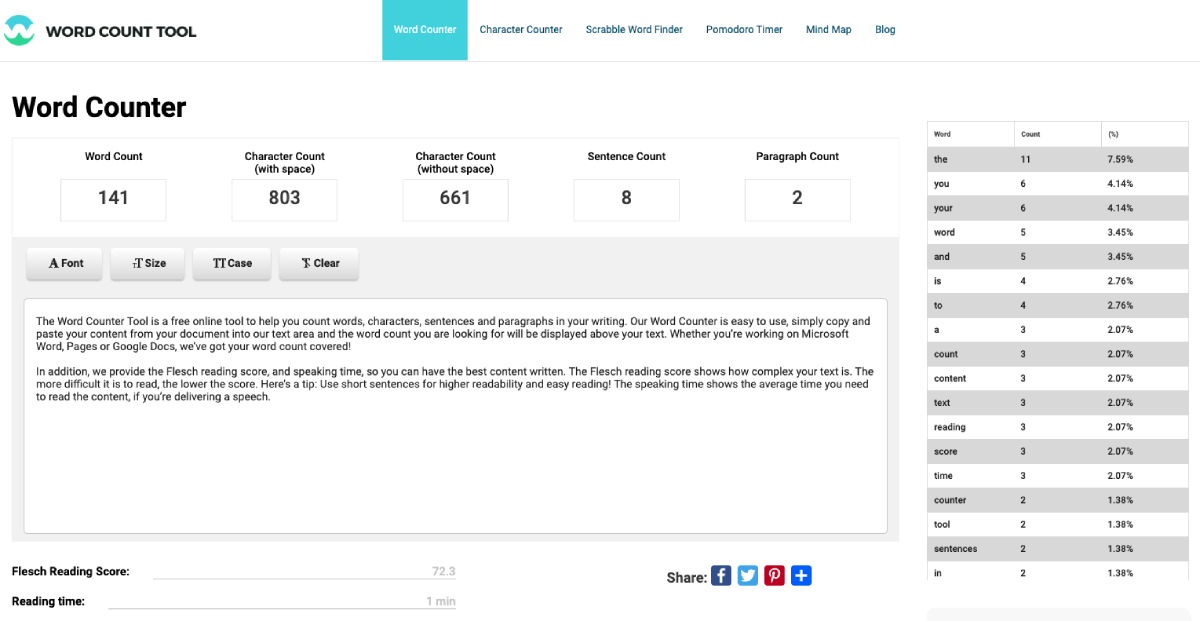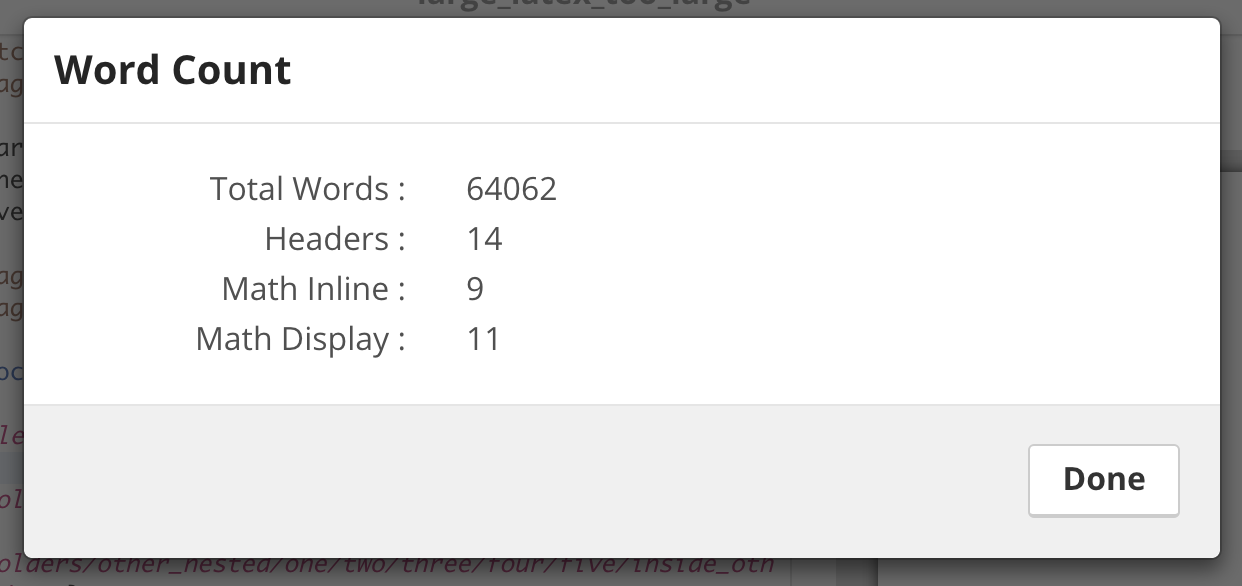


Hyphenated permanent compounds such as "follow-up" (noun) or "long-term" (adjective) were counted as one word. Most importantly, many students were drilled on the rule that "certain words don't count", usually articles (namely, "a", "an", "the"), but sometimes also others, such as conjunctions (for example, "and", "or", "but") and some prepositions (usually "to", "of"). However, during the era when school assignments were done in handwriting or with typewriters, the rules for these definitions often differed from today's consensus. But the behavior of most major word processing applications is broadly similar. Different word counting programs may give varying results, depending on the text segmentation rule details, and on whether words outside the main text (such as footnotes, endnotes, or hidden text) are counted.

The first trait of that definition is that a space (any of various whitespace characters, such as a "regular" word space, an em space, or a tab character) is a word divider.
#Word count software
The consensus is to accept the text segmentation rules generally found in most word processing software (including how word boundaries are determined, which depends on how word dividers are defined). However, especially since the advent of widespread word processing, there is a broad consensus on these operational definitions (and hence the bottom-line integer result).
#Word count how to
Variations in the operational definitions of how to count the words can occur (namely, what "counts as" a word, and which words "don't count" toward the total). ( July 2014) ( Learn how and when to remove this template message) Unsourced material may be challenged and removed. Please help improve this section by adding citations to reliable sources.


 0 kommentar(er)
0 kommentar(er)
